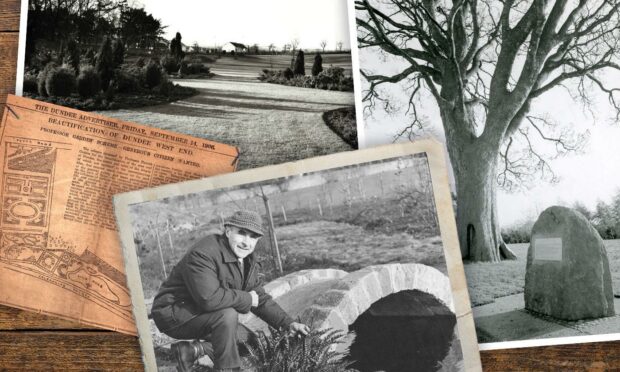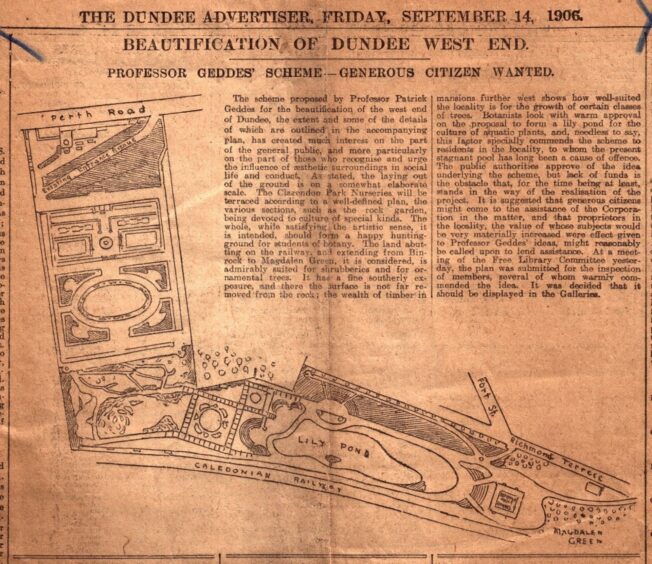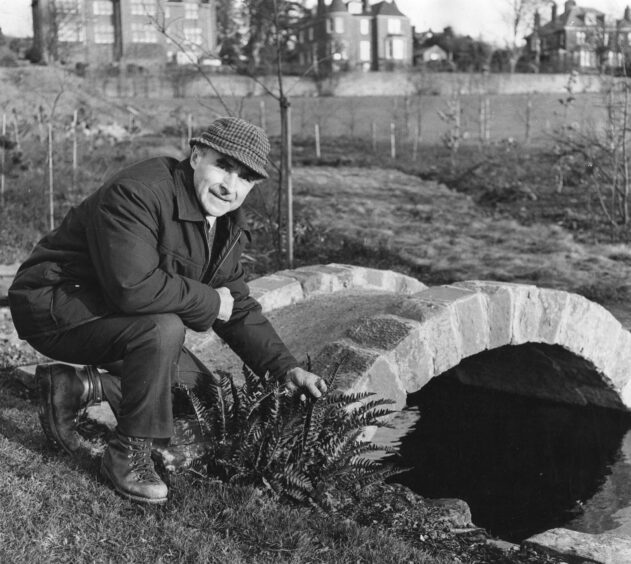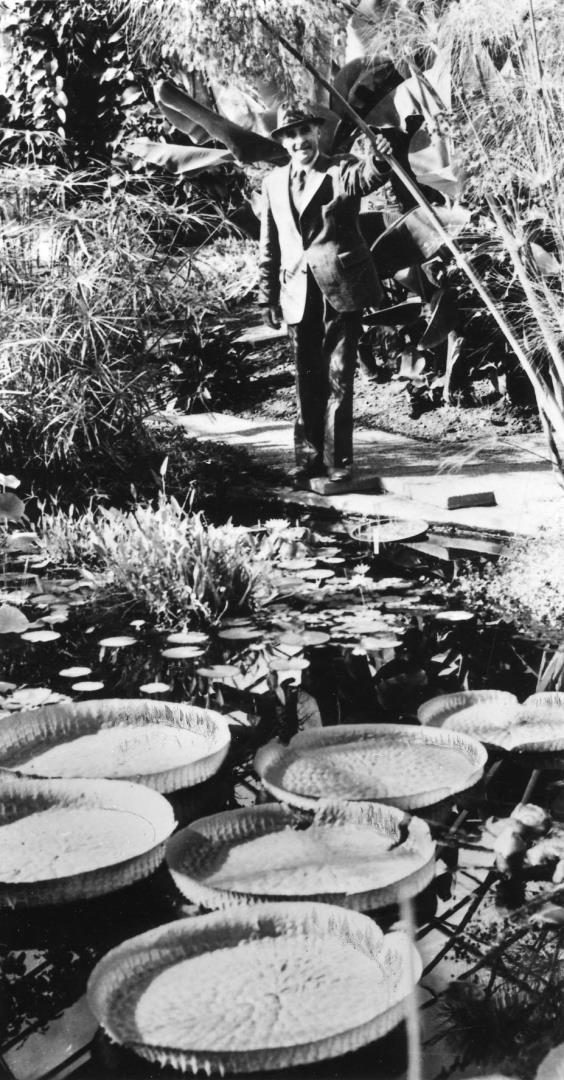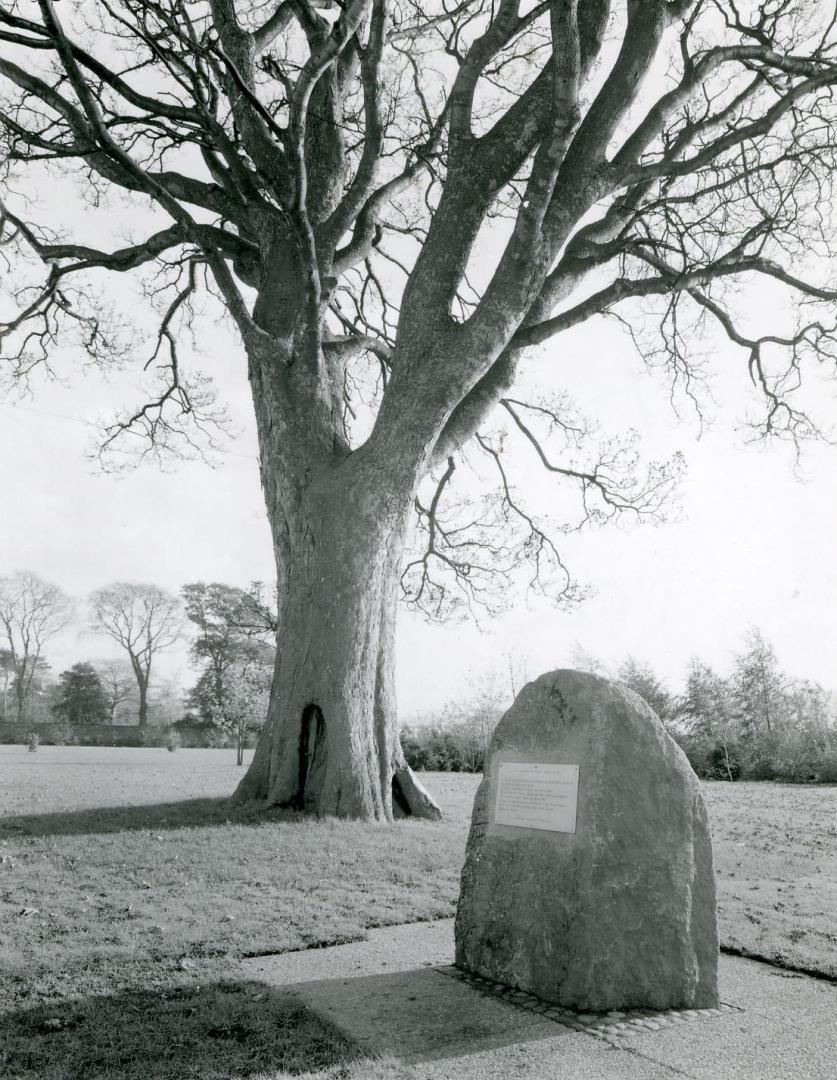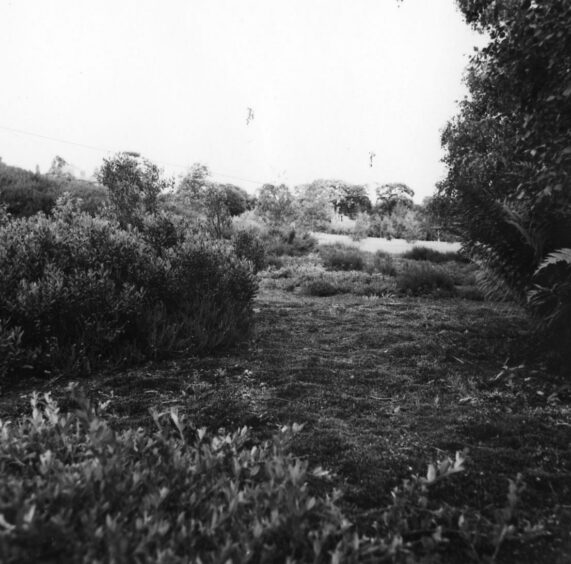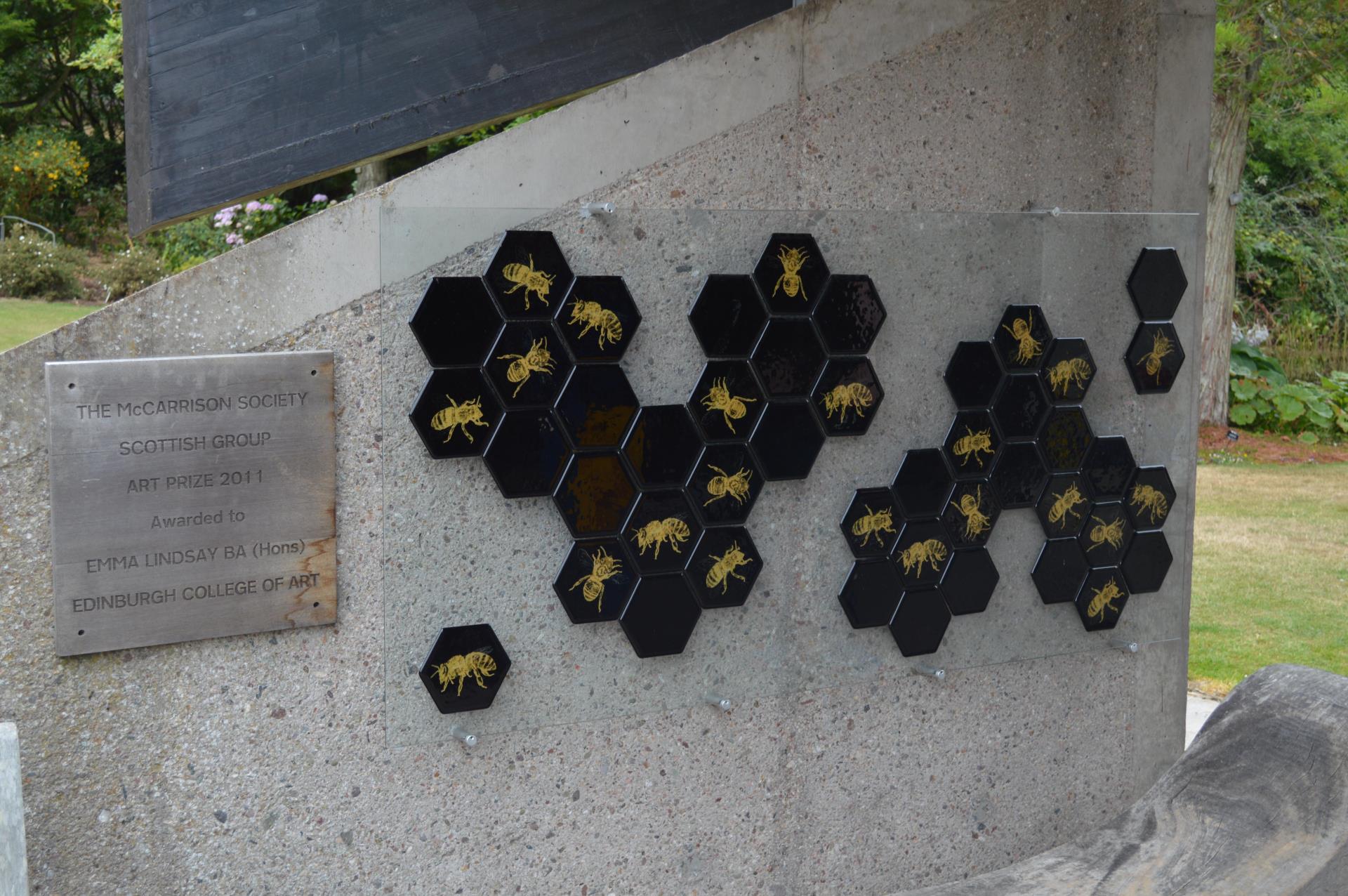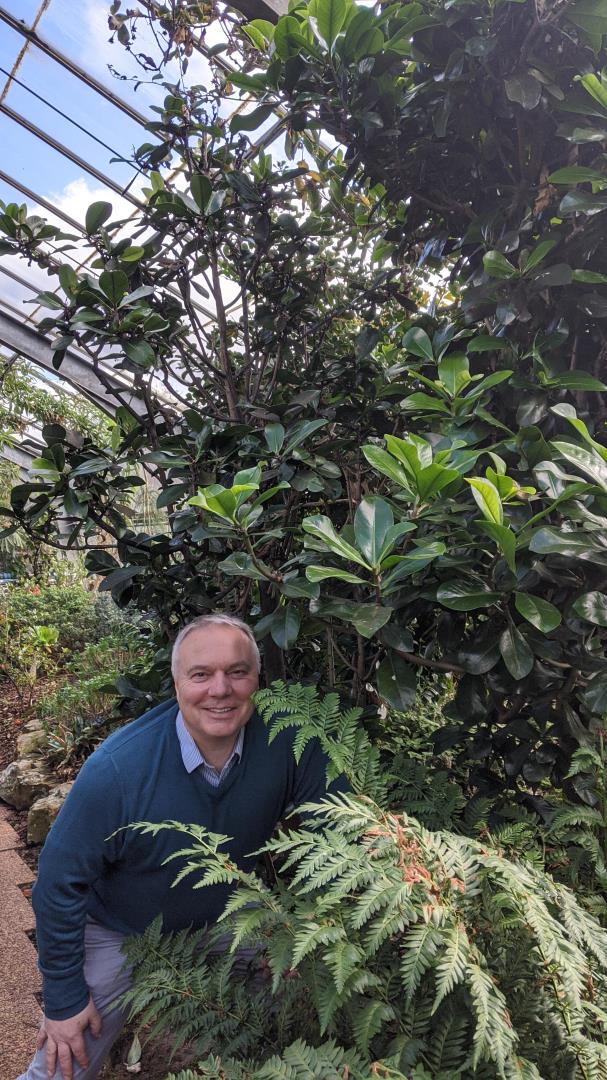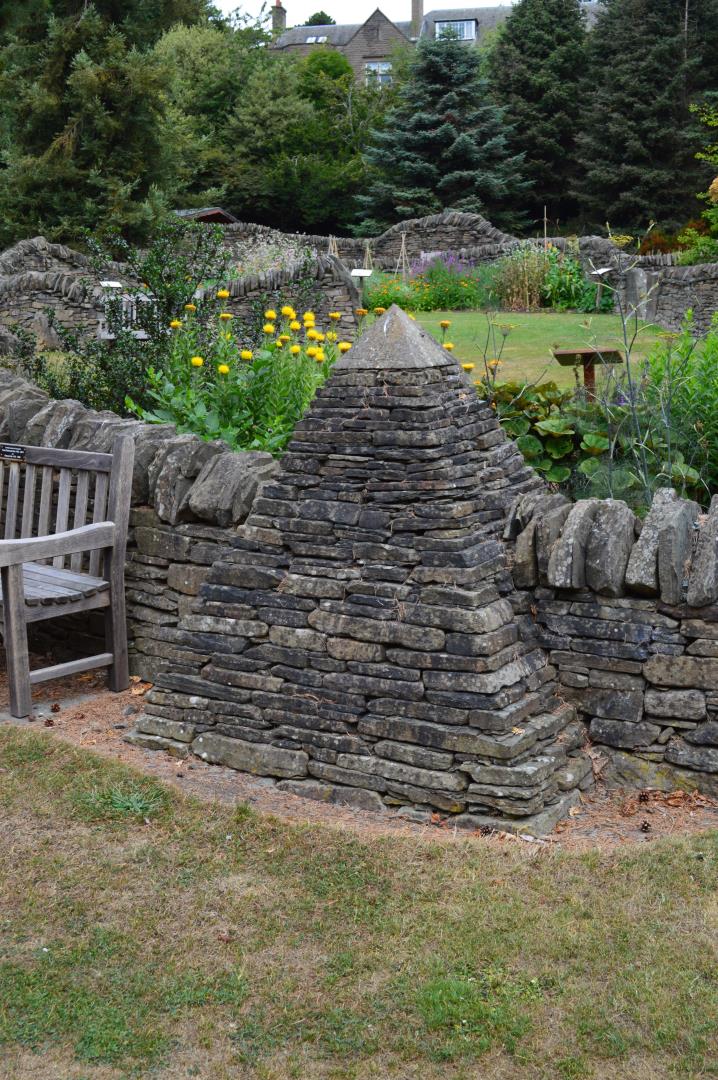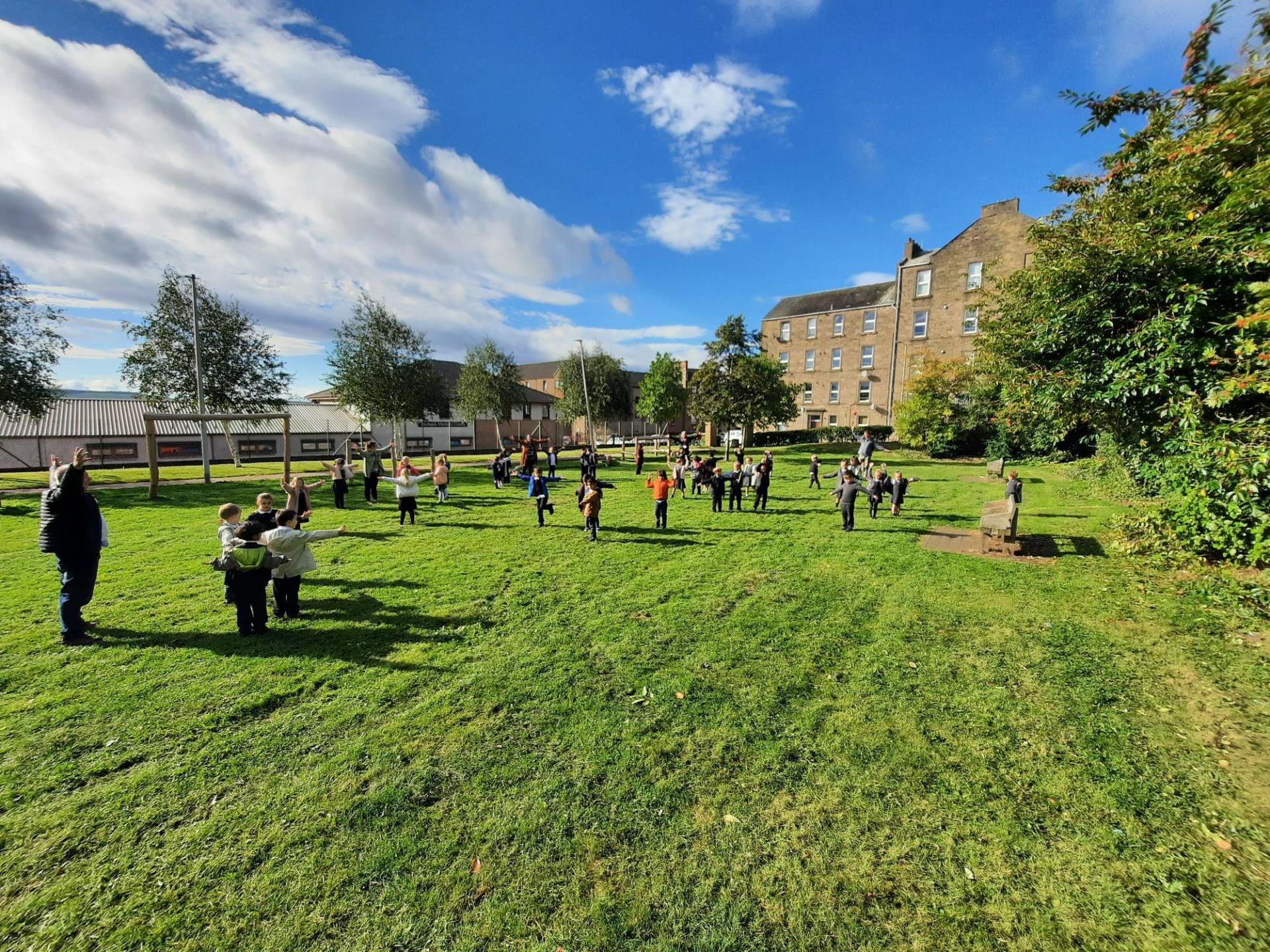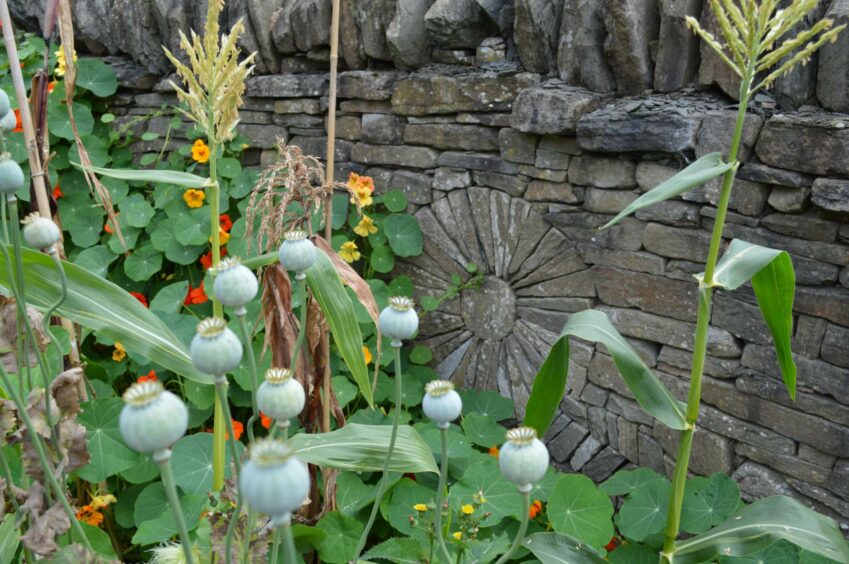It has gone from an old potato field in Dundee to a five-star attraction enjoyed by over 70,000 visitors a year since 1971.
The University of Dundee is celebrating 50 years of the city’s Botanic Garden with a new exhibition in the Tower Foyer Gallery.
Over the Garden Wall commemorates the people who were involved in the project and charts the 50 things which shaped this iconic green space.
The exhibition has been dedicated to the memory of Dr Neil Paterson, the garden’s education officer, who died whilst in the process of planning the 50th anniversary event.
So let’s peek over the garden wall and find out more.
Planting the seeds
Dundee’s first botanical garden was built in the early 18th century by physician and surgeon Patrick Blair.
Thought to be only the 4th in the country at that time, Blair created a physic garden for medicinal herbs which was visited by local medical men and supplied many of the city’s apothecaries.
However, in 1715 the surgeon was forced to flee the country due to his support of the Jacobite cause.
The garden was abandoned.
Its location is uncertain, but antiquarian A C Lamb claimed it was on “the sunny land lying to the north of the Overgate Port sloping down to the Scouringburn…known as Blair’s Orchard”.
After Blair’s garden was abandoned several other biologists attempted to develop a botanic garden for the city, including Sir Patrick Geddes.
Geddes made various attempts, the most ambitious of which was at the west end of Magdalen Green.
However, his plans were deserted due to a lack of funds.
In the 1960s, staff at Queen’s College started campaigning for a botanic garden at the university.
A report was prepared by Hugh Ingram and Tom Nicolson in 1966 but was not taken up until 1970.
By this time the independent University of Dundee had been formed.
In 1971, Principal James Drever approved for work on the nine-hectare site to begin.
A growing collection
The University of Dundee Botanic Garden opened on October 23 1971.
The site for the garden had previously been used as a potato field, meaning it had fertile and well drained soil and was ideally suited to growing a wide range of species.
This was fortunate, as it was the last suitable site left within a reasonable distance of the University that could be obtained.
The University secured a 99-year lease for the site and purchased adjacent land at either end to extend it.
The first curator of the Botanic Garden, Eddie Kemp, established a clear direction for the garden’s early collections.
He said: “The main function of the Garden is to supply plant material to the department of Biological Sciences for teaching, and also to provide accommodation for the plants grown for research”.
He also recognised that the garden had to appeal to “all visitor levels – academic, school and public”.
Kemp was previously the curator at the Royal Botanic Gardens in Edinburgh.
He brought with him to Dundee his 21 years of experience in professional gardening, as well as many rare specimens of plants.
Over a ten year period, he developed the native plant area that would become the centre of the garden.
Many of the plants were rescued from threatened regional landscapes.
Kemp was also responsible for adding the tropical and temperate glasshouse to the garden.
The garden changed from being a research and medicinal garden to a visitors garden in the 1990s when Leslie Bisset took over the curatorship.
He expanded the garden significantly by adding 4,500 plants in his first ten years.
However Dundee Botanic Garden’s current curator Kevin Frediani, acknowledges the work Bisset did to preserve Kemp’s legacy too.
He said: “Les studied under Kemp at the Royal Botanic Gardens in Edinburgh.
“Over the 18 years he spent as curator, he continued to grow the plants Kemp had brought over from Edinburgh.
“By the end of his and Kemp’s tenure, you could see the garden we know today.
“As we approached the Millenia, Alasdair Hood arrived.”
Hood was the third Curator to be appointed at the garden.
A born-and-bred Fifer, he had formerly taught horticulture and arboriculture at Elmwood College.
Kevin added: “Hood wanted to make the visitor attraction more profitable, and also more useful to the university and wider society.
A change of direction
“There was a shift occurring in the UK at that time – nearly all of the university botanic gardens closed or transferred over to trusts.
“The universities no longer valued these resources.
“They were prioritising gene banks, research into DNA…that was supposed to solve poverty, our food problem, everything.
“So the garden needed a new source of income.
“Alasdair widened the public engagement by including things like an orchard and a café.
“He ramped up the education programme, and appointed the first full time education officer.”
During Hood’s 20 years as curator, the Botanic Garden became a significant visitor attraction with up to 70,000 visitors recorded each year.
The Botanic Garden has also been a home to art and artists over the years.
It has hosted many art exhibitions in its visitor centre, and houses several permanent public sculptures.
According to Kevin, the garden’s art is one of the reasons people keep coming back again and again.
He said: “People have switched off to scientists; they don’t want to hear people like me – but they respond to really good art.
“So the artists who are working with us are finding ways to engage the public with things like the climate crisis, and find solutions.”
The sculpture Bee Fruitful and Multiply by Emma Lindsay was commissioned by the McCarrison Society in 2011 to highlight the plight of the honeybee and how important it is to our food chain.
Kevin has been curator for the Botanic Garden since 2019.
But his career didn’t begin there.
He said: “There’s no manual for being the curator of a botanic garden.
“We are trained; I started as a gardener and put myself through university where I studied botany.
“From there I got a scholarship for the Cambridge Botanic Gardens.
“But ultimately each curator has their own vision, mission, or values that they bring to the role.”
He defines a curator as being someone who should ‘be in the background’, and this humility continues as he credits the garden’s success to his predecessors.
“Getting interested in the environment – starting to ask questions like, ‘how does a tree grow that tall?’, ‘why is the world changing?’ – can enrich our minds just as well as a good book.
“But you need a good guide to take you through.
“I’ve been lucky that the curators that came before me were really good at what they do.
“Their legacy allows me to have a platform where I can share the work of the garden with a wider society.”
Kevin began planning the Over the Garden Wall exhibition shortly after his arrival.
He said: “When I started working here, I also wanted to know the history of the botanic garden.
“How did this space become a place? Who were the people who have shaped and impacted the collection?
“I spoke to the education officer – Dr Neil Paterson – and we started collating information.
“Neil sadly passed away last autumn, but he was the one who told me the 50th anniversary was in October 2021.
“So we started planning the exhibition.
“It’s been important to me to continue his legacy and dedicate the exhibition to him.
“I was influenced by a BBC expo that was titled ‘100 items that shaped the world’.
“I got to wondering, what were the 50 things that had shaped the botanic garden?
“Out of it came these ten panels that described how within their own tenure, each creator helped shaped the collection in their own way.
“This garden has been used by the curators in so many different ways.
“And its relevance to the university and also to the wider communities has also changed over the years.
“But at its core, it’s a plant collection which can remove nitrous oxide from the atmosphere, something which can cause asthma attacks or bronchitis to those who have that propensity.
“And it’s also an amenity – people seeking out a respite from their busy lives.
“It has so many benefits to our city.
“And I want to take those benefits over the garden wall.”
- Over The Garden Wall is based in the University of Dundee Tower Lamb Gallery until June 24 2022.
More like this:
Alister Forbes Mackay: The Dundee student who went to the ends of the Earth with Ernest Shackleton
Moira Macgregor: The Dundee artist who set the fashion trends of the 1960s
